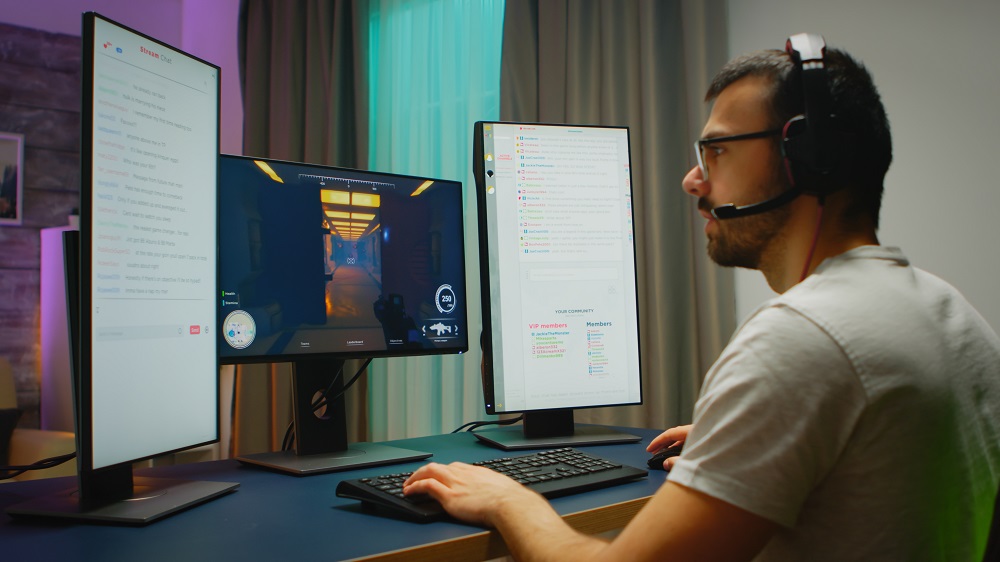Developing a game is no child’s play!
Game developers can vouch that the game development landscape does not look as pretty and exciting as it seems. Months, sometimes years of planning, impending deadlines, trials, and corrections go into creating a video game loved by the targeted audience.
If you are just starting as a game developer, this blog will provide all the steps and processes constituting the game development cycle.
Dive in to explore the madness that goes into creating games that play beautifully.

It’s the IDEA that makes games successful:
The whole presence of the game revolves around that idea that makes the foundation of a mobile game development process. This idea needs to be unique and engage with the target audience well. A lot of brainstorming and analysis goes into developing the concept that sets it apart from the crowd.
A couple of ideas need to be refined before moving on to the further development processes.
8 Stages of the Game Development Process:
Now we will take you through the several processes that go into developing successful mobile games:
-
Planning:
The development team defines the game concept, creates a vision and mission statement, identifies the target market, specifies the project scope, and creates a timeframe and budget during this first phase of planning. Proper planning is essential to guarantee that everyone in the team knows the game’s goals and can collaborate effectively to produce a quality result.
The idea of the game serves as the backbone of the whole game development process. A sure proof of the concept or idea has to be generated to see how viable and feasible it will be for the gaming studio to develop the game. Proofing a concept is required to be shared with the publisher of the game, as the publisher will approve a pitch for time, expected budget, and marketing plans.
-
Pre-Production
After the concepts have been proposed, then comes the pre-production step in the picture. In this step, the involved department brainstorms ways to give life to the various ideas laid on the table.
In this stage of the game development process, the writers, artists, marketers, project leads, and several other departments sit together and decide upon the scope of the video game. The writers decide upon the game’s narrative with the assistance of project leads.
The engineers then convey the technological constraints to the writers. Artists and designers work hand-in-hand to make the mobile game visually pleasing. Developers work closely with the engineers to decide the game mechanics.
-
Actual Production
The game’s actual development takes place in this stage. This includes making the sound effects and music, planning the levels, implementing the game mechanics, and producing the game’s assets. The team will also conduct routine game testing to find and address any bugs. The production phase of the game development process is usually the longest; therefore, having a committed crew is crucial to the project’s success.
-
Prototyping
Prototyping is not integral to the mobile game development process but has advantages. A prototype helps designers and engineers to experiment and test different aspects of the game, including its mechanics, designs, and functionality. The main point of creating prototypes is to check the feasibility and identify potential issues.
A prototype helps a game development company refine its ideas and ensure that the game’s final version meets the pre-defined standard.
-
Testing
Testing is an important phase of game development because it aids in finding and resolving any faults or problems. In this phase, the development team extensively tests the game to find bugs, glitches, or crashes and works on the feature freeze process. Additionally, the team needs to get testing input and adjust as necessary. These steps ensure the game is playable, stable, and prepared for release.
-
Pre-launch
The pre-launch stage of the game development is a stressful time for the developers. They might feel that their game may or may not be loved by the targeted audience.
Pre-launch activities include marketing strategy creation, launch strategy development, distribution channel setup, and beta testing. It creates anticipation and buzz for a compelling game launch. Developers might also exhibit their game at events or employ independent advertising, such as sponsored content or YouTube reviews, to attract targeted audiences and cultivate a fan following.
-
Launch
The team’s priorities throughout the game’s debut phase are player feedback management, game promotion, and problem-solving, including significant and minor bug fixes. Data on the game’s performance, including player engagement, retention, and monetization, can also be gathered at this stage. The team might keep releasing patches and updates after the launch. The master release signifies the game’s final version and the end of the production process.
-
Post-release
The post-release phase of the game provides continuous support and maintenance. This includes keeping an eye on user comments, fixing glitches and problems, delivering patches and updates, and overseeing the community for the game. The post-release phase is essential to keep players interested and ensure the game lasts a long time. This stage may also include creating new features, expansions, and content to keep the game exciting and engaging for players.
Trust your gaming vision with Hashbyte!
Hashbyte stands out in the game development landscape by crafting extraordinary games for Android mobile platforms. With a keen eye for innovation and a commitment to delivering top-notch entertainment, Hashbyte consistently produces terrific gaming experiences.
Our Android games seamlessly use amazing graphics, immersive gameplay, engaging narratives, and captivating players from the first tap.














